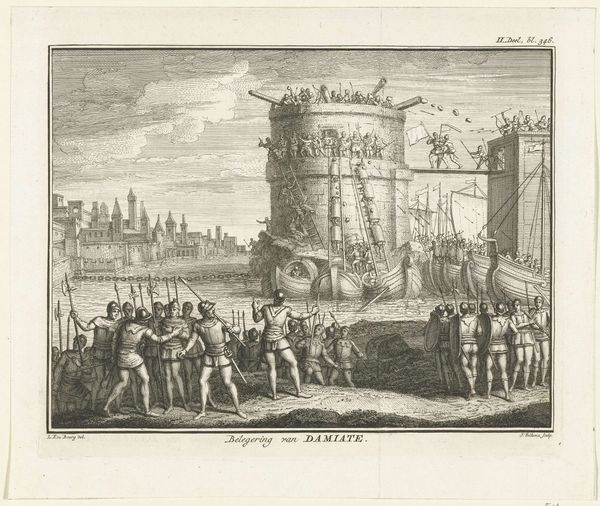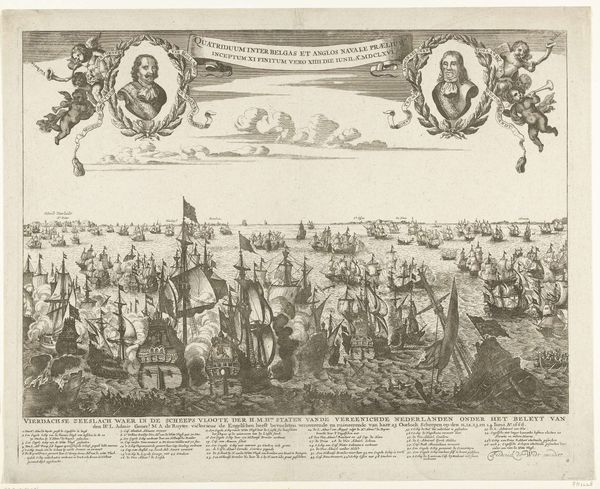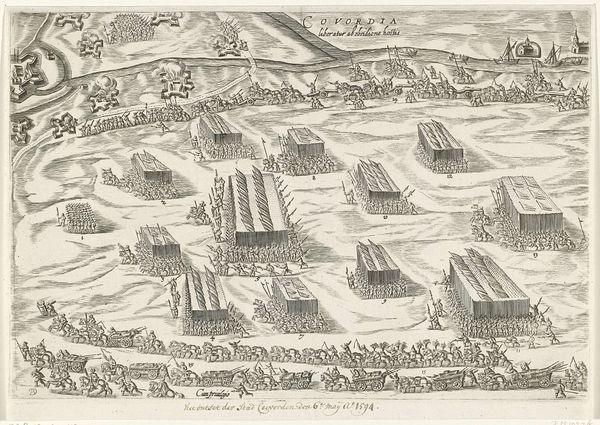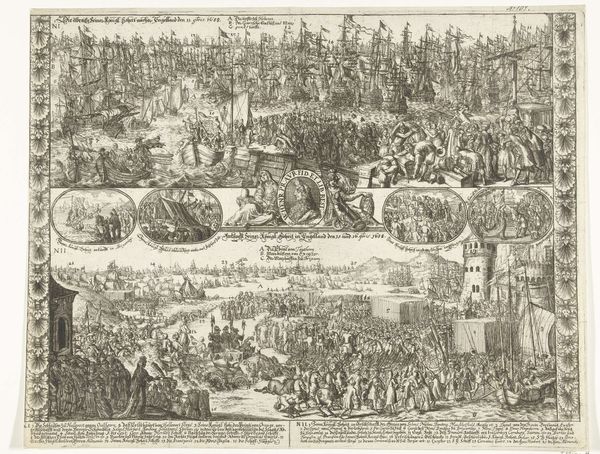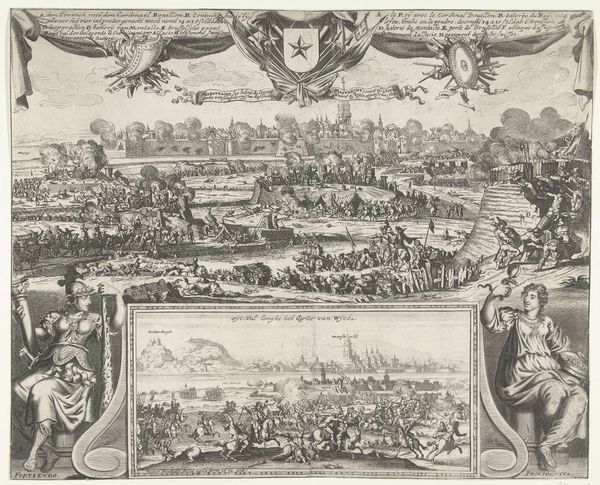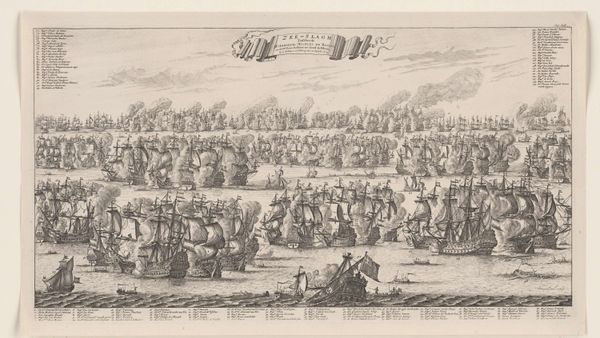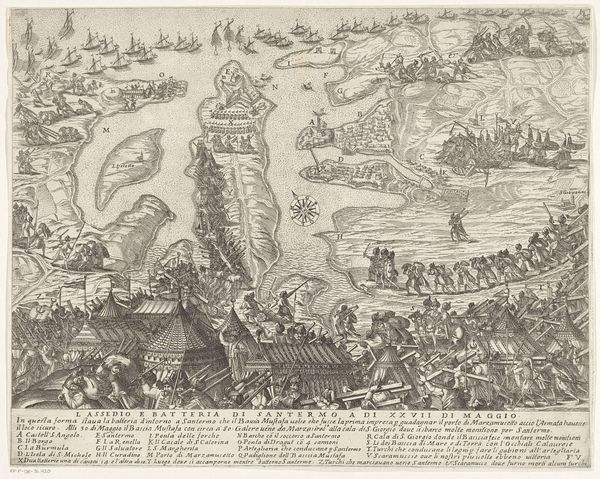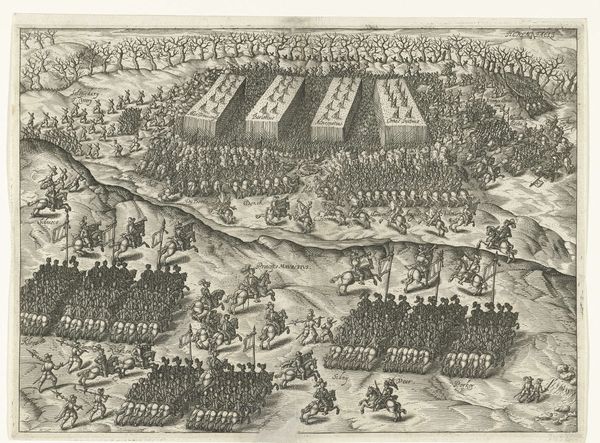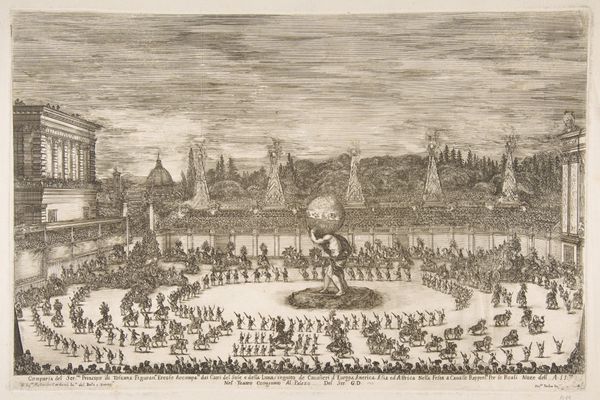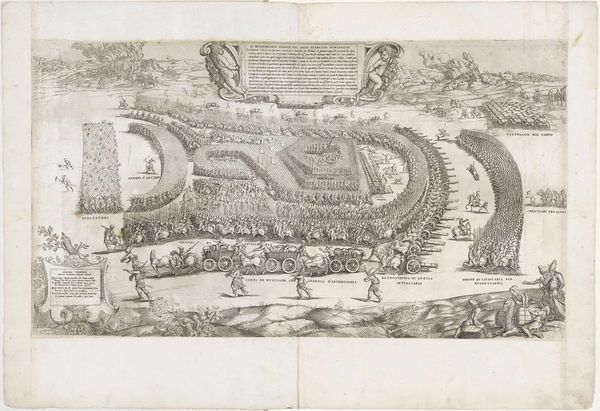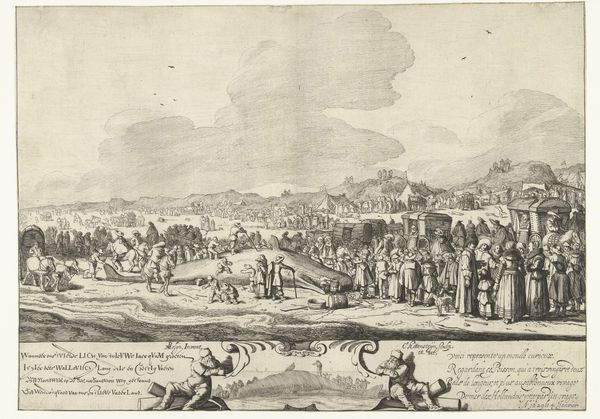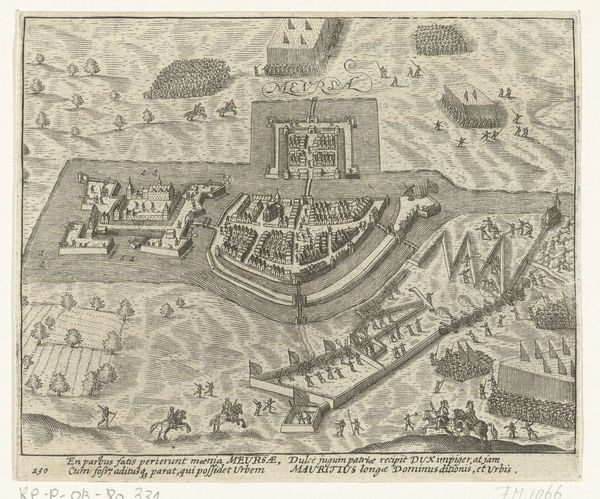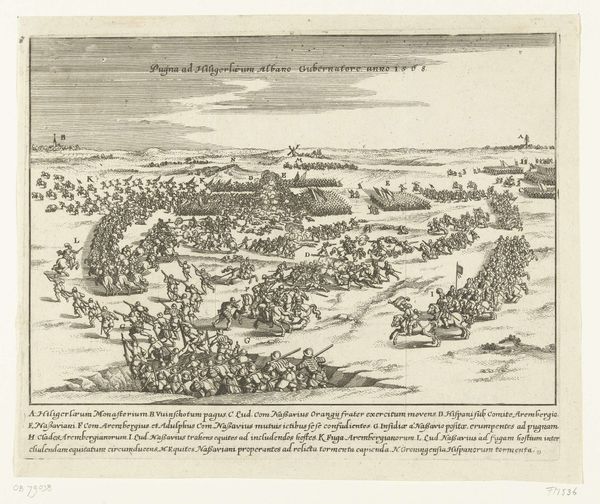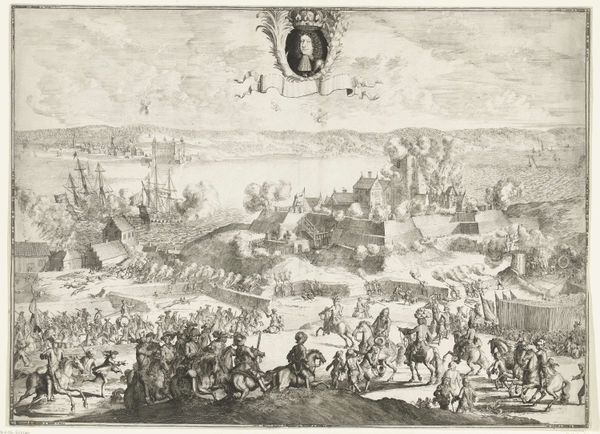
print, engraving
#
baroque
# print
#
perspective
#
cityscape
#
history-painting
#
engraving
Dimensions: height 500 mm, width 607 mm
Copyright: Rijks Museum: Open Domain
Curator: Here we have Pieter Schenk's "Engelenburcht," created between 1675 and 1712. It's a print, specifically an engraving, depicting a panoramic cityscape centered on the Castel Sant'Angelo in Rome. Editor: It’s striking. The Castel, or the Mausoleum of Hadrian, dominates the scene, almost crushing the procession below. The detail is intense; I wonder about the physical labor that went into etching such precise lines. Curator: The sheer scale and the artist’s mastery of perspective pull us right into 17th-century Rome. Beyond the meticulous depiction, there's also this sense of the Castel acting as a powerful, timeless symbol. Note how the flags fly. They add motion, but also proclaim dominion. Editor: Absolutely. The perspective manipulates power dynamics. You see all these people going to a celebration, or pilgrimage... maybe even to petition to power itself. All materials were of limited quantity back then, so the selection and use of materials for Schenk to create this were already communicating class distinctions and what he wanted to make note of to show people his world views through images. The print itself would become a valuable object because of the labour and means that went into the final work. Curator: That's astute. Considering the era, Schenk uses this historical monument—once a Roman mausoleum, then a papal fortress—to communicate authority, a lineage of power, if you will. Look at the angel atop the Castel; it suggests divine endorsement of earthly rule. It also might speak to its spiritual significance in the Roman cityscape during the Counter-Reformation period, since it shows a famous bridge. Editor: And those materials reinforce that. The paper, the ink, the printing press—the choices involved make a statement about status, access, and the flow of information. Engravings were a medium to reproduce and share, to control messages on what Rome and power actually meant. Who paid the cost for creating that, you might wonder. Curator: The composition and perspective reinforce what was culturally deemed most important. An astute point to note in Schenk's Rome and the history the artist wishes to preserve. Editor: Makes me really appreciate all the decisions behind such artwork.
Comments
No comments
Be the first to comment and join the conversation on the ultimate creative platform.
